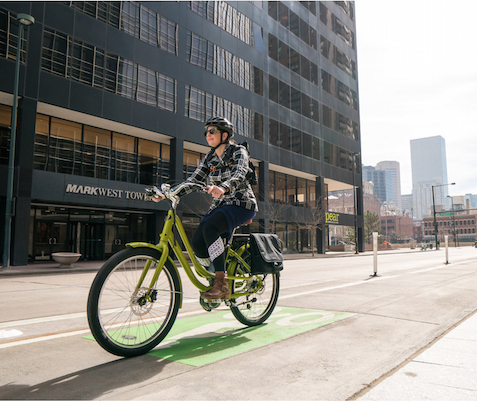What About the Drains, Oakland?
3:43 PM PDT on July 27, 2021
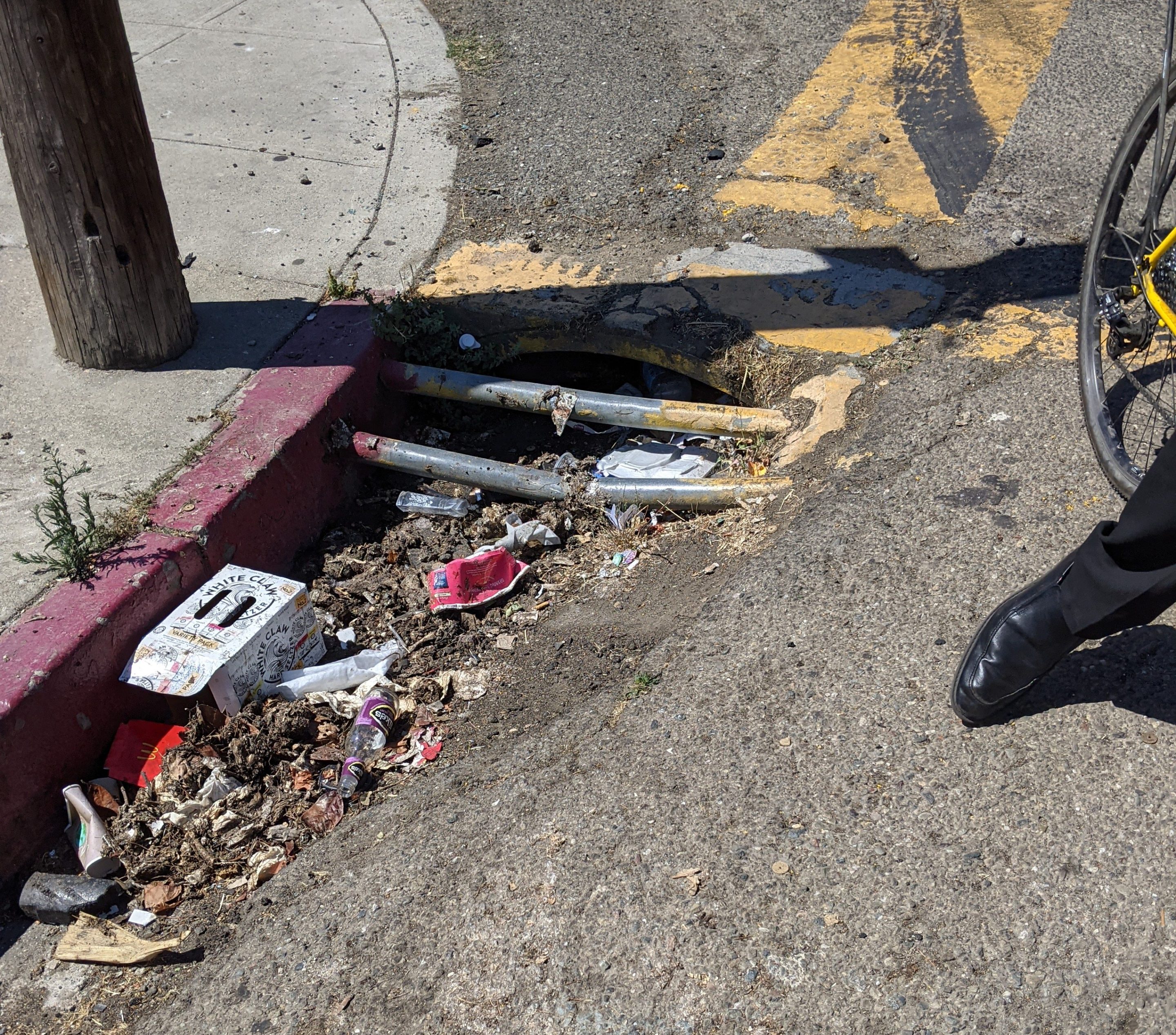
A storm drain in East Oakland. Photos: Streetsblog/Rudick
Note: GJEL Accident Attorneys regularly sponsors coverage on Streetsblog San Francisco and Streetsblog California. Unless noted in the story, GJEL Accident Attorneys is not consulted for the content or editorial direction of the sponsored content.
Take a piece of rotted wood and paint it. It will look nice for a few days. And then the paint will start to peel off and degrade and you'll be left with an ugly piece of rotted wood again. That's an apt analogy for the condition of most residential streets in East Oakland, according to Vignesh Swaminathan, an engineer and consultant who has helped create bike-friendly streets from San Jose to Emeryville. Readers may also know him by his TikTok handle, "Mr. Barricade."
"They don't grind the asphalt, they use cheap asphalt... they never put real tax dollars here," said Swaminathan of the streets of the Seminary and Havenscourt sections of East Oakland, during a tour he gave to Streetsblog earlier this month. They also never built proper drainage systems for the soil in the first place and don't maintain what they have, he added.
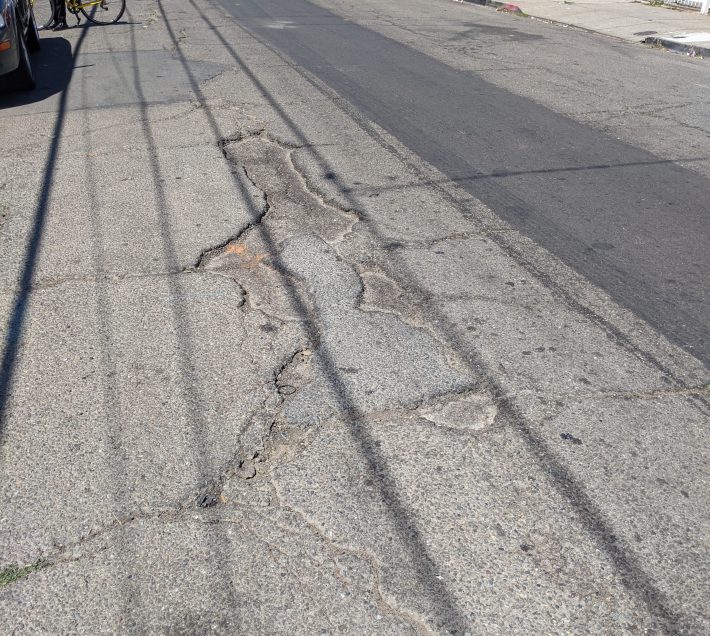
The result, like with the rotted wood analogy, are streets that, when they are repaved, fall apart in the first rains or certainly within a year or two. "They just asphalt over old cracks," he explained.
Many districts in Oakland depend on concrete drainage channels and shallow, underground pipes that carry water under intersections. The problem is, added Swaminathan, when street sweepers come by they have to clean and blast out these pipes to make sure they are clear. But it never happens. And in an effort to make short-term but impermanent improvements, crews often pave over the gutter. "You expect it to carry away the water, but they pave over it," he added.
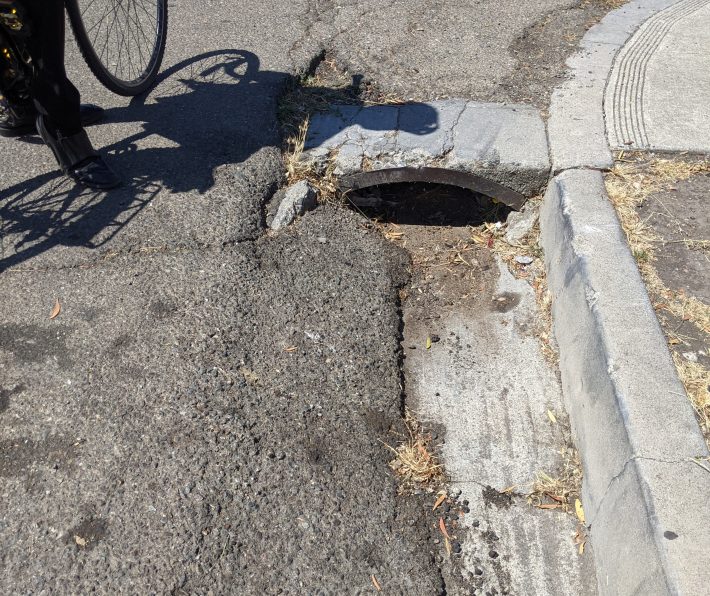
City officials were contacted over a week ago for comment on why drainage is so poorly maintained in East Oakland. Earlier this month, they announced that "...Oakland has broken a new paving record for the second year in a row, with more than 40 miles paved in the fiscal year that ran July 1, 2020 to June 30, 2021."
But as Swaminathan stressed to Streetsblog, much of those newly paved streets will be falling apart in a year or two, thanks to drains that look like this:
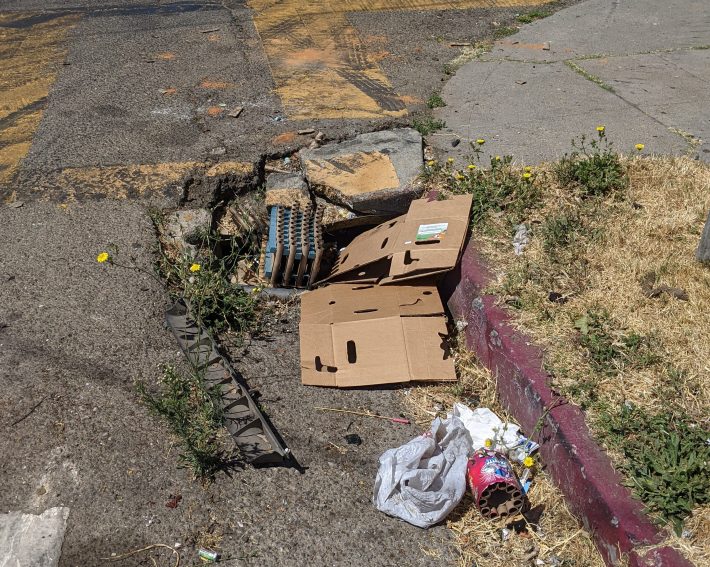
The drains and street corners also stink of years of dog feces and urine that never wash away.
Swaminathan opined that this is why people are incredulous when OakDOT officials talk about adding bike lanes on city streets--especially considering the danger all the collected trash, the subpar drains themselves, and the potholes already present to cyclists. Streetsblog reached out to Councilmembers Treva Reid and Loren Taylor, who represent the districts on the tour, over a week ago to find out if anyone tracks how many cyclist and pedestrians have been injured by falling on the debris collected around these drains. Look for updates if they reply.
Swaminathan adds that equity discussions about protected bike lanes across town on Telegraph belies the very-real equity concerns over drainage and street conditions in East Oakland. He pointed out that if one looks at old redlining maps of Oakland, the lack of proper drainage systems--and the craggy streets that result--overlays closely.
"Vignesh raises a real issue and he was the first one years ago to ever show me a storm drain map of Oakland and there does appear to be major gaps, as well as maintenance and repair issues," wrote Bike East Bay's Dave Campbell, in an email to Streetsblog.
"I agree it's a problem, but the connection to redlining is inaccurate, since those streets were designed and constructed before redlining," wrote Bike East Bay's Robert Prinz. "Many of them were not redlined at the time and became majority Black neighborhoods later on. Those same sorts of drains still exist in many other parts of the city, even in Rockridge, and definitely do not map directly onto old redlining maps."
Whether or not it maps perfectly, the drainage issue needs to be addressed before more money is spent laying asphalt that's just going to fall apart, especially in underserved communities. Swaminathan concluded his tour with a look at 69th Avenue, where speed tables and new asphalt were put down within the last couple of months thanks to a new round of grants.
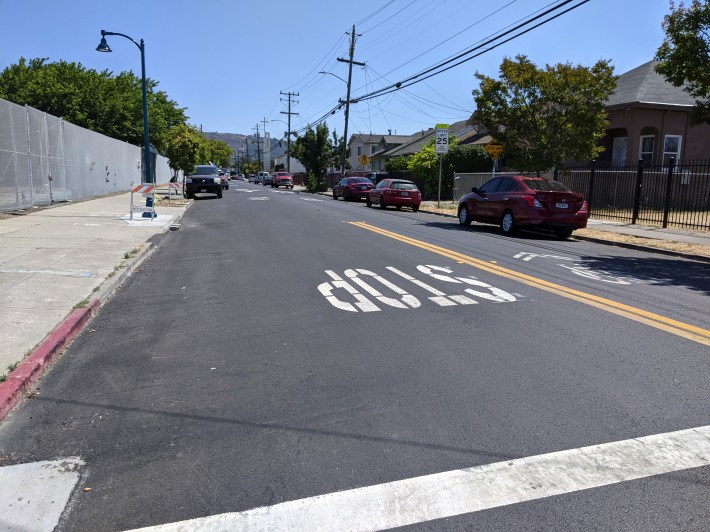
Even here though, the drainage wasn't corrected. As seen in the above photo, layers of asphalt upon asphalt are now almost at curb height. And, said Swaminathan, there needs to be a concrete basin along the curb to handle runoff. "It'll be great, for a year or two," he said of the new pavement and markings. After that, it will look like most other streets in the neighborhoods of East Oakland.
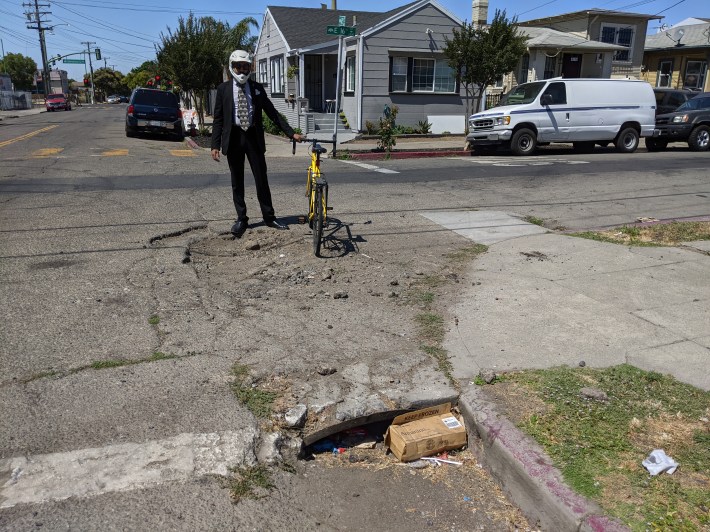
Note: Swaminathan's TikTok posts on streets were taken down for some reason. Streetsblog had hoped to include his TikTok on East Oakland street drainage in this post. Fortunately, you can still see it preserved at the start of this YouTube video.
Stay in touch
Sign up for our free newsletter
More from Streetsblog San Francisco
Update on Oakland DOT’s Lakeshore Protected Bike Lane Project
Public seems fairly positive and accepting towards the coming project. Let's hope it stays that way




